Apparently, Australia’s future productivity, income and jobs will be driven by piling tens-of-thousands of extra people into Australia’s cities each year selling services to each other. From The Australian [my emphasis]:
Both Treasury and the Reserve Bank are looking to the services sector and business services in particular to drive Australia’s productivity and growth once new production generated by the resources boom matures…
The strength of services sectors has been behind the dynamism of the economies of Sydney and Melbourne, which have now been driving Australia’s economic growth over the past five years as resource construction comes to an end, dragging down the economies of the mining states.
The performance of Melbourne, in particular, has been notable as it has long had the greatest concentration of Australia’s beleaguered manufacturing industry and had, aside from hosting the Australian headquarters of BHP and Rio Tinto, little direct stake in the resources boom.
Reserve Bank governor Philip Lowe recently said he was often asked where future jobs growth would come from.
“The short answer is that it will come mainly from where it has come from in the recent past — from the myriad of occupations in the services sector. Some of these jobs will attract relatively low rates of pay, but, if our experience is a useful guide, more of these jobs will be higher-paying high-skill jobs,” he said…
Treasury has also been examining the role of the services sector in driving productivity. Economists in the department’s new structural reform group have written a paper examining the impact of changes in the composition of the workforce on productivity.
There has been concern that productivity would decline as labour shifts from the highly capital intensive mining to the rest of the economy with growth driven more by labour intensive services.
However the study found that the growth in the productivity of the resources sector as production ramps up will more than offset any decline from the entry of former mine workers to the rest of the economy.
The resources sector is only 8 per cent of value added, but has accounted for about a quarter of Australia’s productivity growth over the past five years, while services have provided half.
Victoria as the model for national growth…OK, let’s take a look at it. Massive population growth:
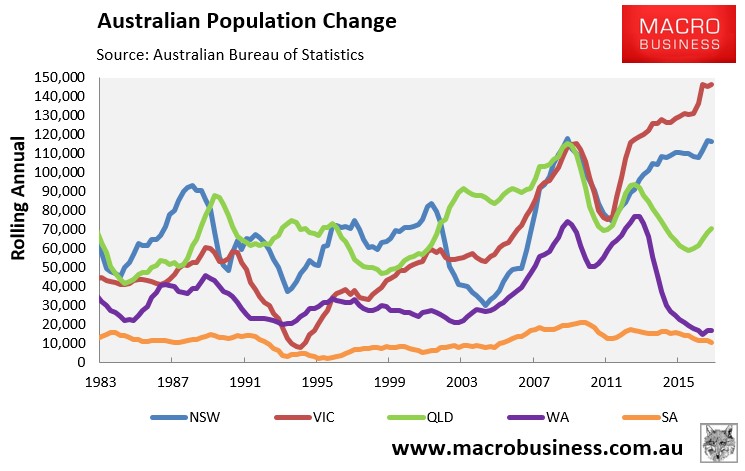
Leading to nation-leading jobs growth:
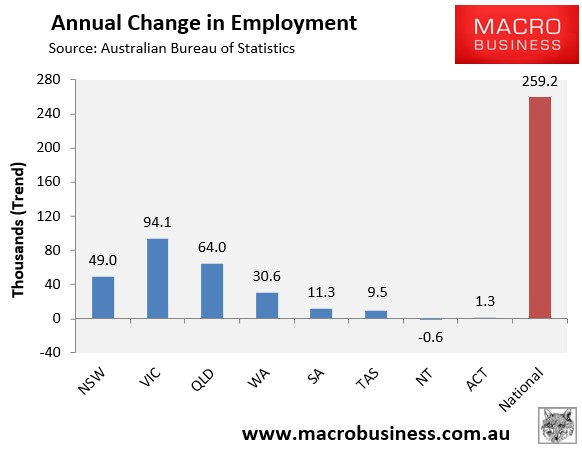
As well as the strongest growth in Final Demand out of all the states:
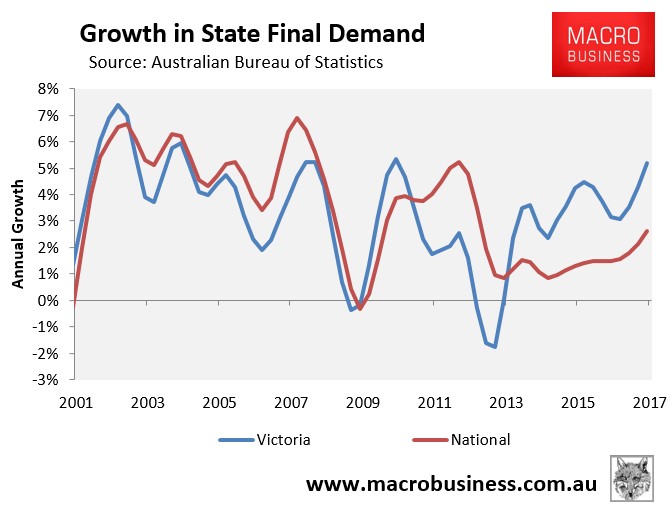
Let’s do it! Except for one small problem. Scrape under the surface and what is revealed is a ponzi economy that is failing to lift the living standards of the incumbent population.
The annual state accounts, current to June 2016, revealed that since the onset of the Global Financial Crisis (GFC) in 2008, per capita gross state product (GSP) in Victoria had risen by a pathetic 0.8%:
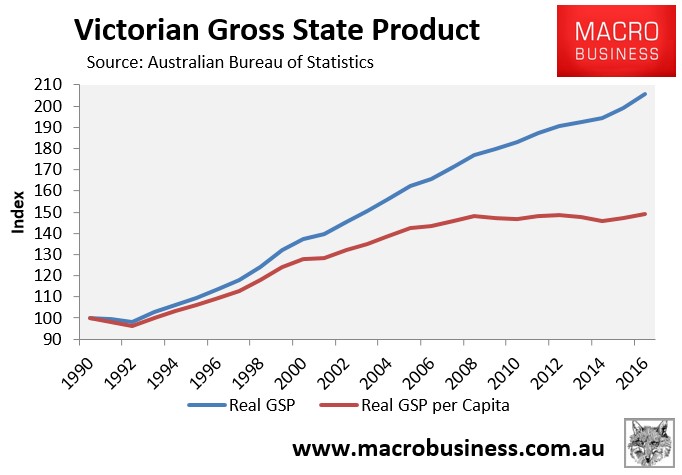
Worse, Victoria has experienced the lowest increase in per capita GSP in the nation since the GFC:
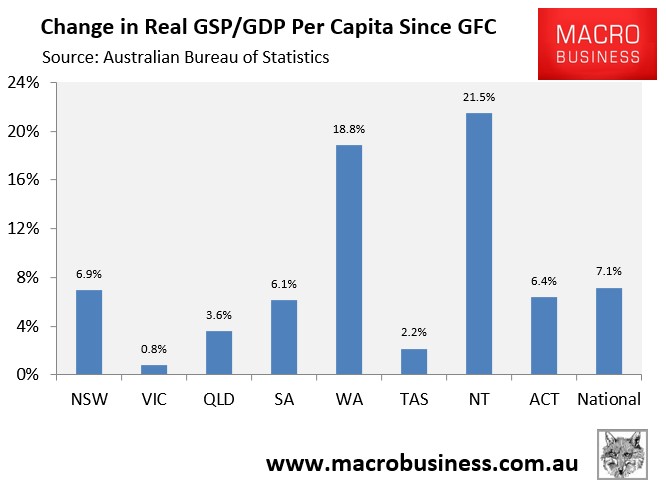
Victoria also has the lowest per capita gross disposable income on the mainland, only beating out lowly Tasmania:
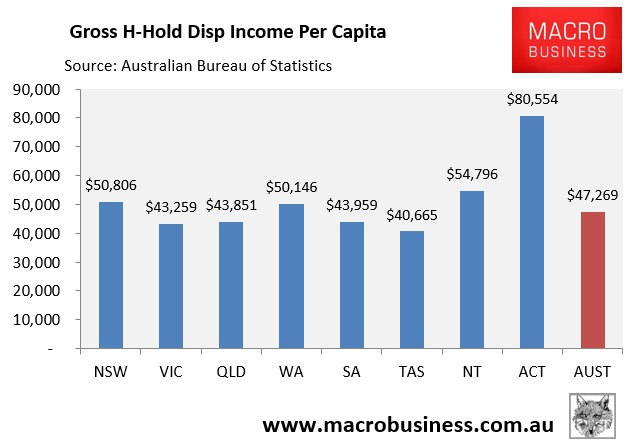
The most recent data also shows that on an individual basis, Victorians are not enjoying increases in their material living standards.
State final demand per capita has barely risen since the GFC, despite robust aggregate growth:
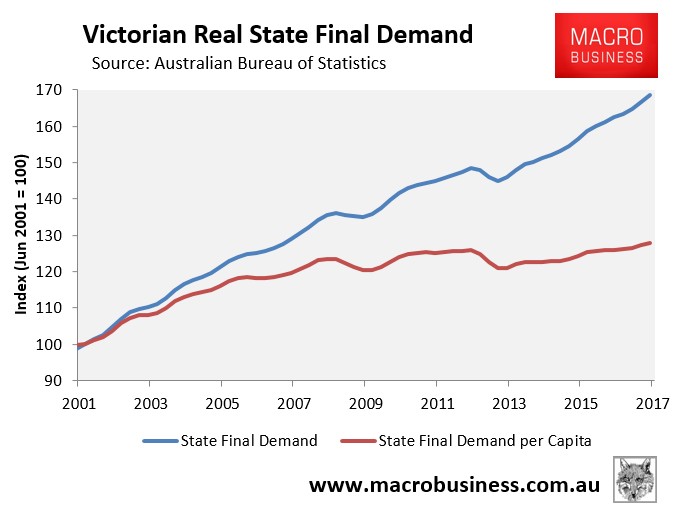
And Victoria’s unemployment rate remains above the national average:
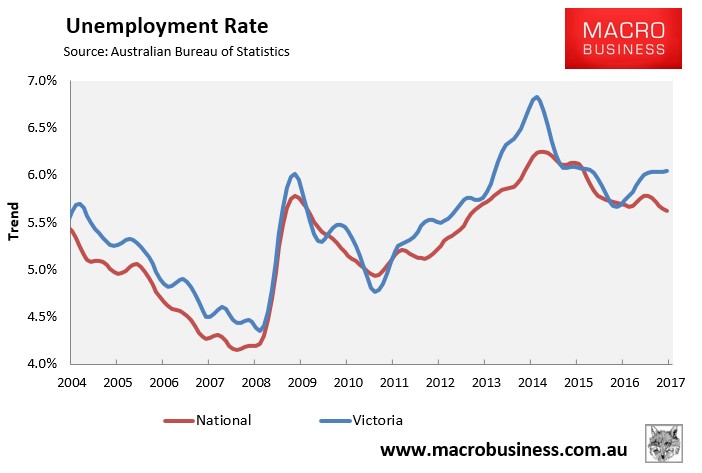
Whereas underemployment is only marginally better than the national average:
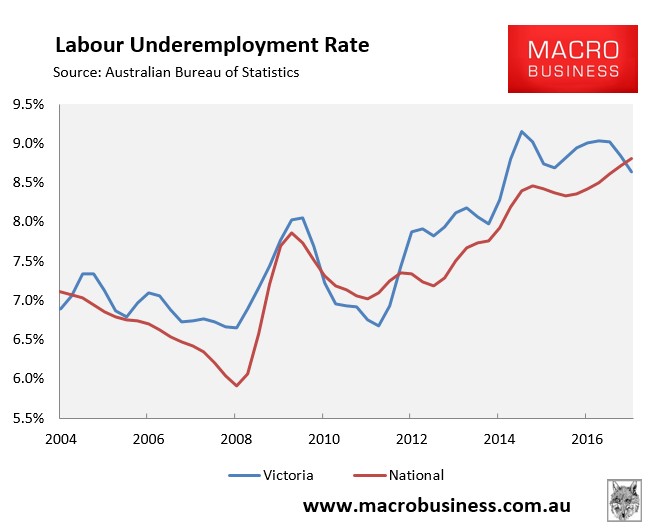
What has been happening in Victoria is that the economic pie has grown due to high population growth. But everyone’s slice of that pie has stayed the same (and shrunk once wider impacts are taken into account)!
Victoria is running a ponzi economy based on endless population growth, which in turn has juiced its services industries (think cafes, universities and financial services) and the housing construction industry (see below chart).
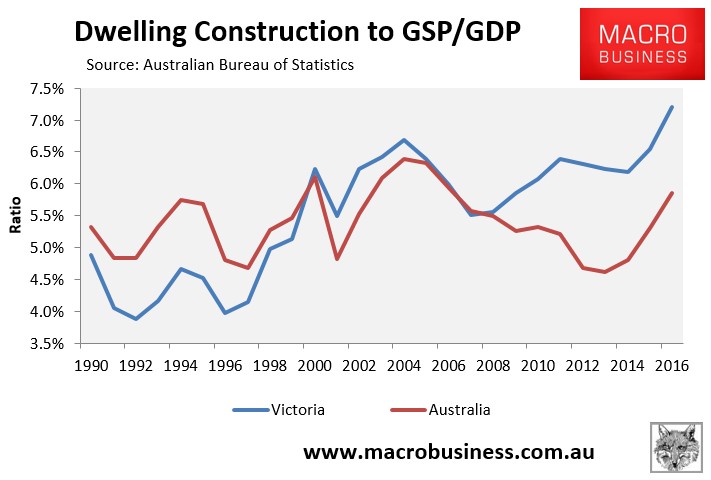
Such a growth model is like a dog chasing its tail. There is activity but the per capita Victorian is no better off. Meanwhile, it accumulates debt as seen in Victoria’s trade performance. Exports recorded minimal growth in the 14 years to June 2016, whereas imports more than doubled. Accordingly, the state’s trade deficit had blown out to a whopping $47.5 billion in the year to June 2016 (see below charts).
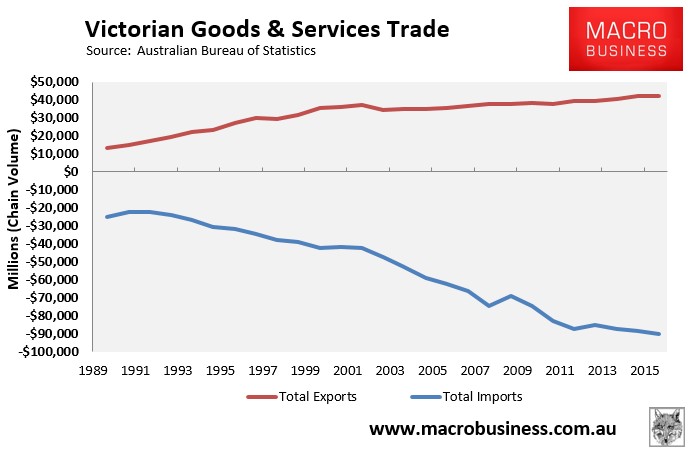
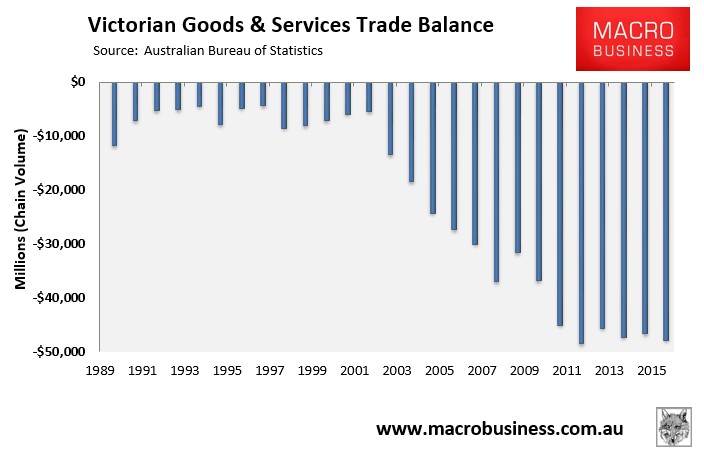
Other indicators of living standards that are not captured in the aggregate economic statistics have unambiguously gotten worse. Economic and social infrastructure is becoming increasingly crush-loaded every year as rampant population growth continually outstrips capacity, leading to overcrowding on roads, public transport, in schools, health, policing, you name it. Housing affordability and rental availability has also deteriorated markedly on the back of the population deluge.
And herein lies the key problem with Australia’s current growth model, which seeks to boost the number of consumers in the major cities, via mass immigration of 200,000 a year, in order to increase demand for housing, infrastructure and services. This model does nothing to boost Australia’s major exports exports in mining and agriculture, but does massively increase imports (think flat screen TVs, imported cars, etc). Moreover, it requires Australia to sell-off our finite resources quicker just to maintain a constant standard of living (other things equal), as well as requires never-ending asset sales and debt to fund the consumption, housing and infrastructure associated with endless population growth.
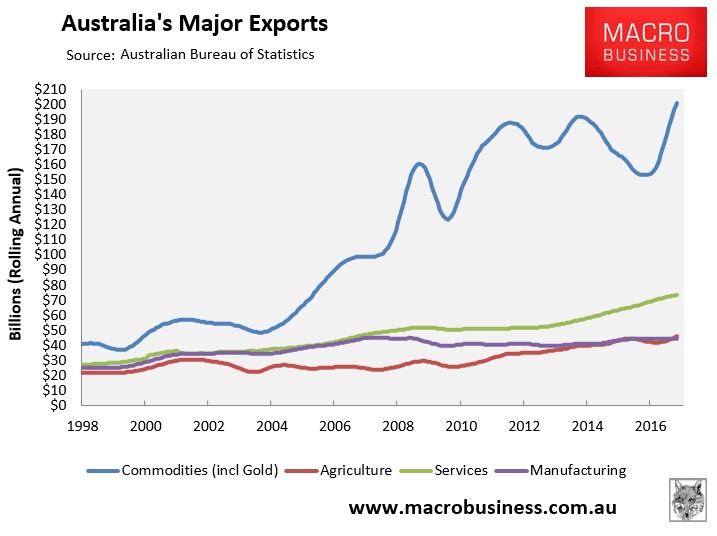
Australians’ living standards would be improved simply by stabilising the population. This would prevent the ongoing dilution of Australia’s mineral wealth among more people. It would prevent our exports from being overrun by imports, thus improving the trade and current account balances (other things equal). And it would reduce debt accumulation and asset sales required to fund the consumption and infrastructure needs of a growing population.
In short, Victoria is a rat wheel economy to nowhere. And the RBA and Treasury stupidly wants to see it spread to the four corners of the nation.

